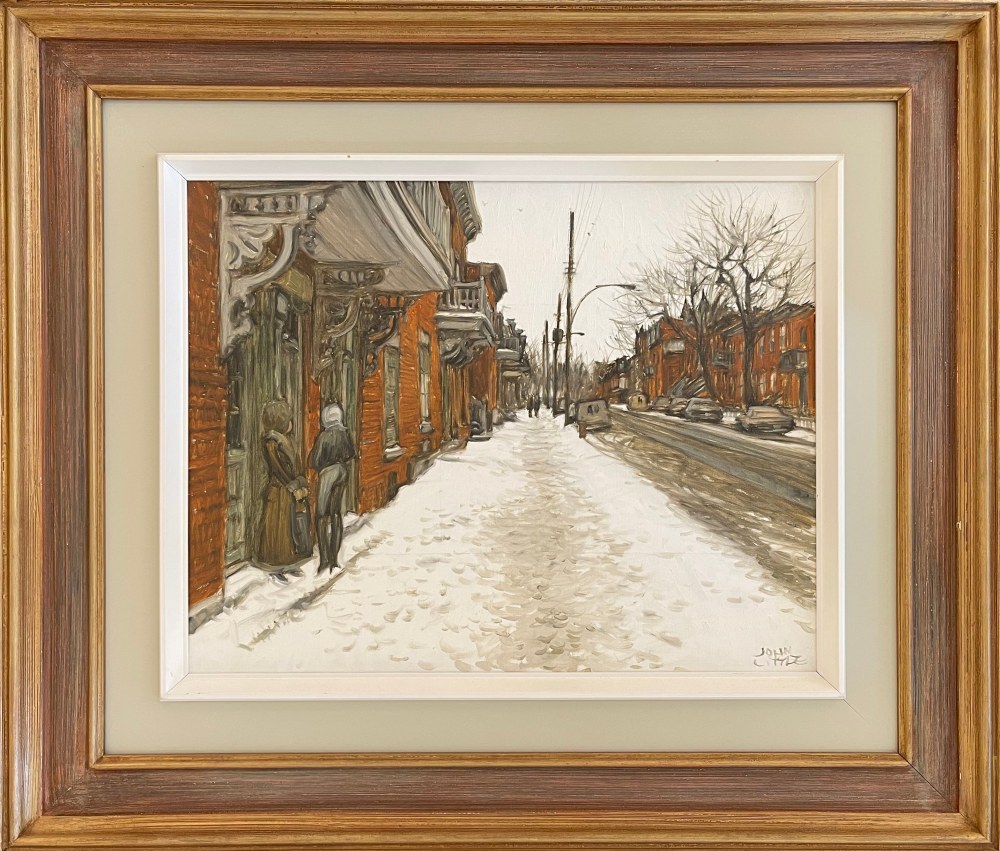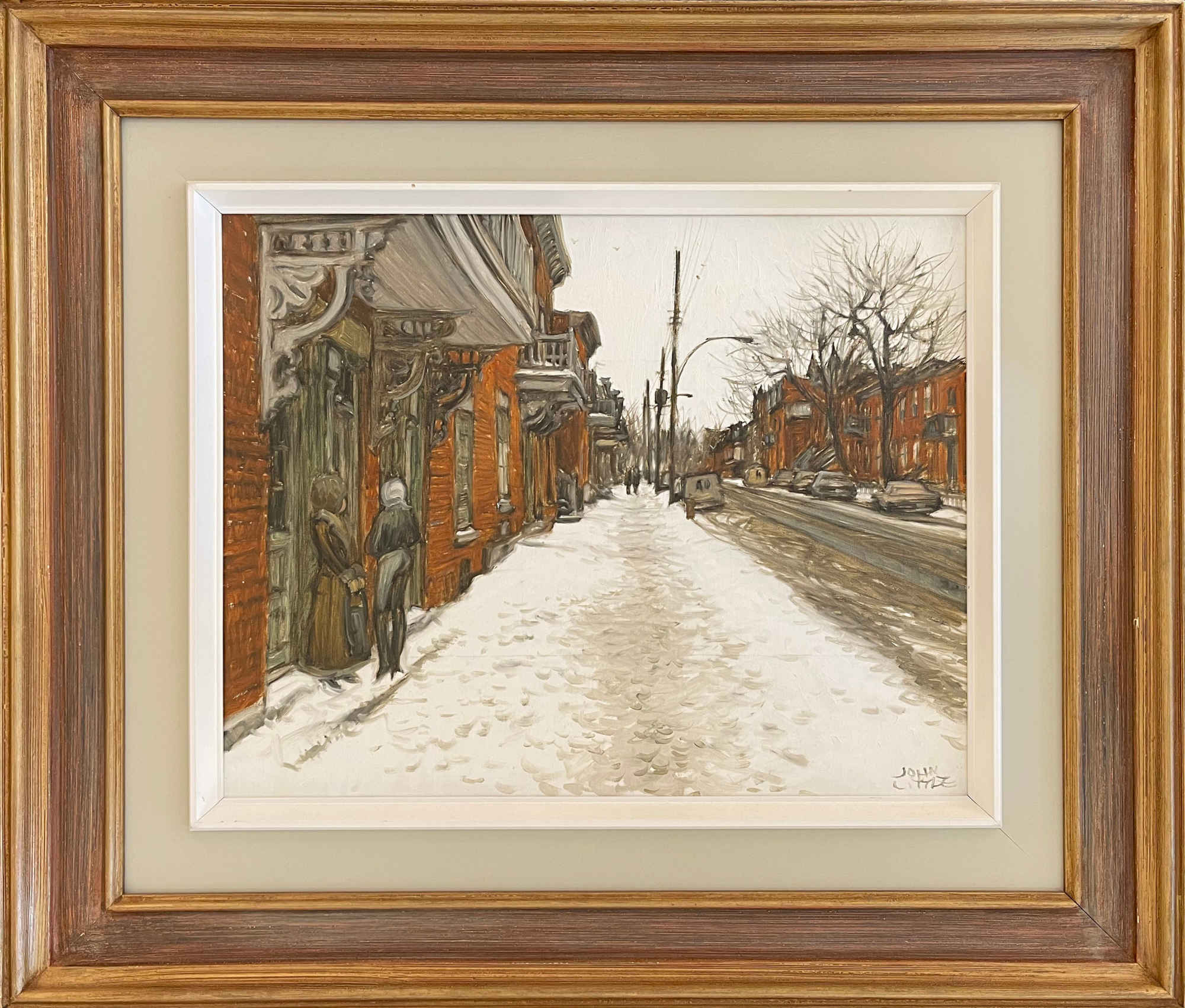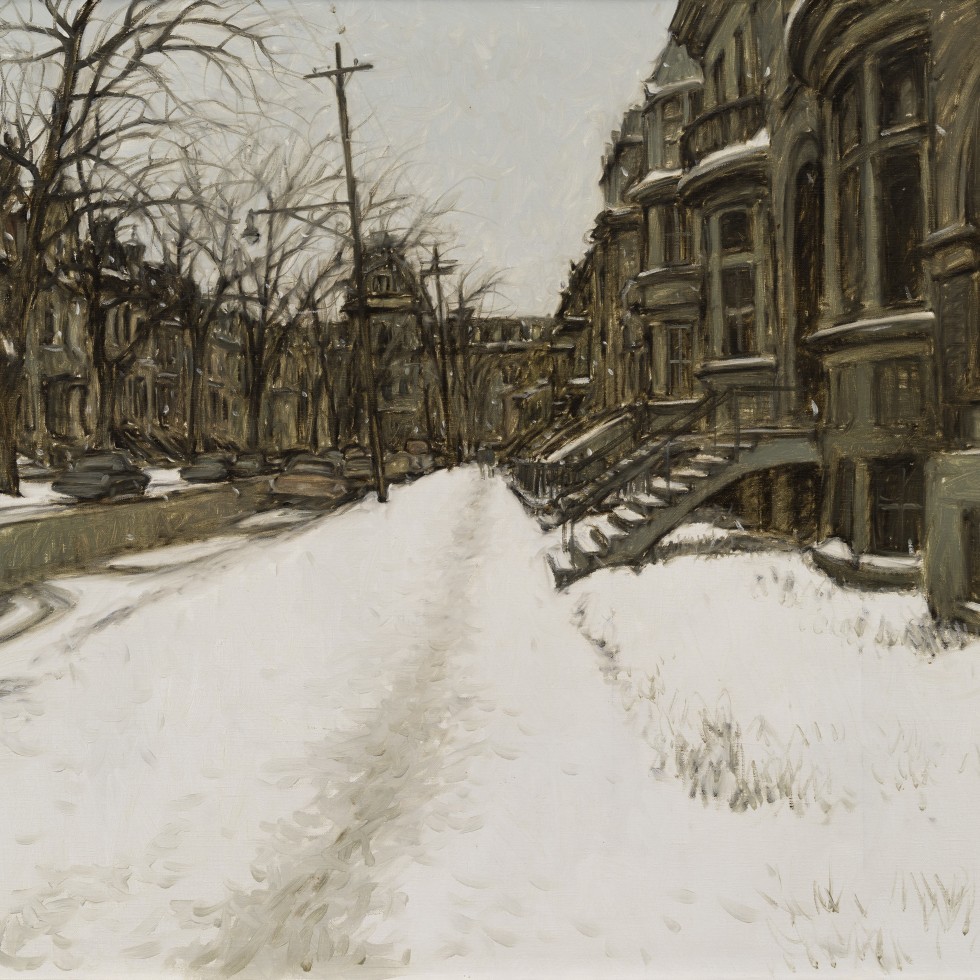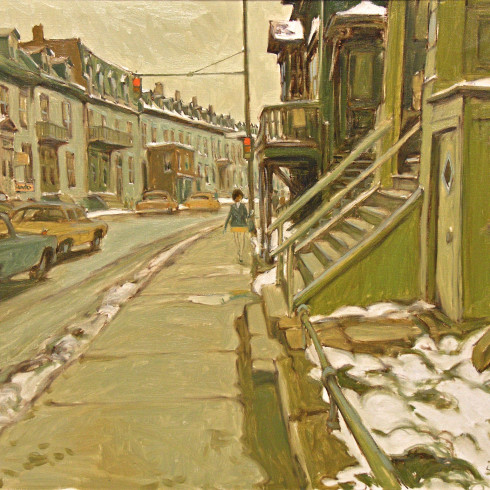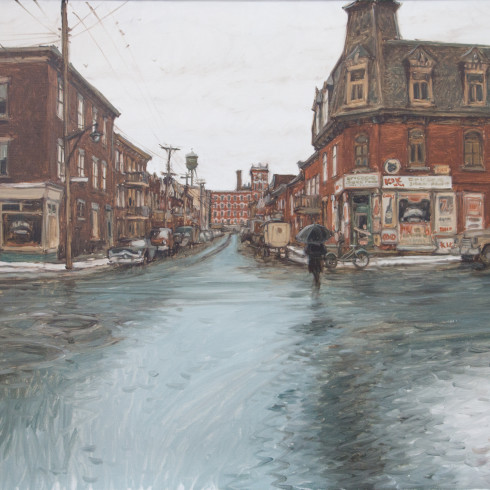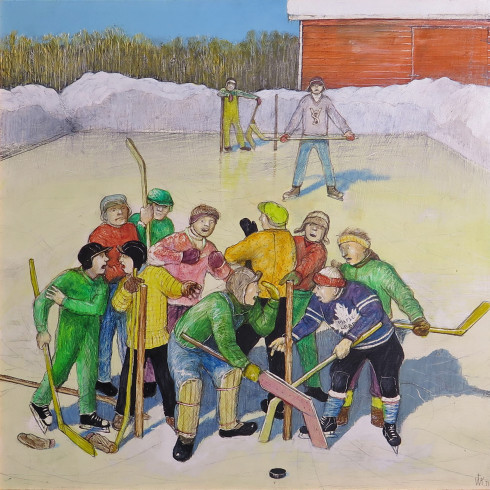Art canadien classique
Rue Laval vers Rachel, Montreal, 1979
Oil on canvas
16 x 20 in
40.6 x 50.8 cm
40.6 x 50.8 cm
This painting is presently on view at our Toronto gallery
$22,500
Inscriptions
signed, 'JOHN/LITTLE' (lower right); titled and dated, 'Rue Laval vers Rachel - Montreal John Little '79' (verso, upper horizontal stretcher), and inscribed, 'Rufus Rockhead' (left vertical stretcher)Provenance
Private collection, Toronto
Laval at Rachel are streets in Montreal’s Plateau Borough. The Plateau encapsulates perhaps what one might suggest is a stereotypical image of Montreal and its winter. This area is often referred to as the home of Montreal’s legendary triplexes, the neighbourhood represented by Les Belle Soeurs and the area where Borduas met with his colleagues leading to Le Refus Global. It is this generation of Little’s painting when he incorporates figures prominently for our visual entertainment in his compositions. They are very much of the place and of the time, as are his paintings.
This particular block on Laval between Duluth and Rachel, architecturally has not fared well from the perspective of maintenance of the roots of the neighbourhood. However, in more recent years and in accordance with contemporary urban planning theories, the borough is revitalised to accommodate this as a neighbourhood. Some of the back alleys that originally were developed for delivery of coal and of other services became grown over from an absence of purpose, have now become paths again, areas for children to play and very much neighbourhood gathering places.
One can only hypothesise the motivation for John Little to pay homage to Rufus Rockhead in 1979. Rufus Rockhead is best known for the club in his name. Prior to his club, his experiences include distinguished service during World War l. Rufus Rockhead is legendary with his entrepreneurship, a jazz club where many of the foremost black jazz musicians from the 1930s, 40s and 50s performed. Dizzy Gillespie, Ella Fitzgerald, Louis Armstrong, and Nina Simone are among the many names jazz fans will recognize today. Of course the young Canadian black musicians worked there. Oscar Peterson and Oliver Jones are familiar to everyone.
We are inclined to suggest that it coincides more or less with the demise and sale of Rockhead’s Paradise and/or Rufus Rockhead’s hospitalization at the Veterans Hospital in Sainte Anne de Bellevue where he died in 1981. These streets Little painted have no particular connection to Rufus Rockhead. However, a reason for the demise of the Club is directly related to Little’s concern. As John Little has commented to me, “urban renewal” and the development of the suburbs, resulting in a relocation of urban dwellers out to the new “burbs” meant that at 5pm the office buildings downtown emptied out with their inhabitants, now commuters, heading home out of the city centre by car, by bus by metro or by train. The city centre dried up come nightfall. Commuters were less inclined to go back downtown after supper, for instance, at home in Pointe Claire. Countless entertainment venues including clubs and theatres closed. And of course the evolution of television and proliferation of the number of channels one could get sitting comfortably at home, made a large selection of entertainment available.
In conversation with me, back in 1994 Little also indicated the urban decay caused around areas where some of the highways and expressways were built. Rockhead’s Paradise was located in an area immediately adjacent to Montreal’ss Ville Marie Expressway. Come the late 1960s that specific area was dark, bleak and uninviting to pedestrians looking to go clubbing.
This particular block on Laval between Duluth and Rachel, architecturally has not fared well from the perspective of maintenance of the roots of the neighbourhood. However, in more recent years and in accordance with contemporary urban planning theories, the borough is revitalised to accommodate this as a neighbourhood. Some of the back alleys that originally were developed for delivery of coal and of other services became grown over from an absence of purpose, have now become paths again, areas for children to play and very much neighbourhood gathering places.
One can only hypothesise the motivation for John Little to pay homage to Rufus Rockhead in 1979. Rufus Rockhead is best known for the club in his name. Prior to his club, his experiences include distinguished service during World War l. Rufus Rockhead is legendary with his entrepreneurship, a jazz club where many of the foremost black jazz musicians from the 1930s, 40s and 50s performed. Dizzy Gillespie, Ella Fitzgerald, Louis Armstrong, and Nina Simone are among the many names jazz fans will recognize today. Of course the young Canadian black musicians worked there. Oscar Peterson and Oliver Jones are familiar to everyone.
We are inclined to suggest that it coincides more or less with the demise and sale of Rockhead’s Paradise and/or Rufus Rockhead’s hospitalization at the Veterans Hospital in Sainte Anne de Bellevue where he died in 1981. These streets Little painted have no particular connection to Rufus Rockhead. However, a reason for the demise of the Club is directly related to Little’s concern. As John Little has commented to me, “urban renewal” and the development of the suburbs, resulting in a relocation of urban dwellers out to the new “burbs” meant that at 5pm the office buildings downtown emptied out with their inhabitants, now commuters, heading home out of the city centre by car, by bus by metro or by train. The city centre dried up come nightfall. Commuters were less inclined to go back downtown after supper, for instance, at home in Pointe Claire. Countless entertainment venues including clubs and theatres closed. And of course the evolution of television and proliferation of the number of channels one could get sitting comfortably at home, made a large selection of entertainment available.
In conversation with me, back in 1994 Little also indicated the urban decay caused around areas where some of the highways and expressways were built. Rockhead’s Paradise was located in an area immediately adjacent to Montreal’ss Ville Marie Expressway. Come the late 1960s that specific area was dark, bleak and uninviting to pedestrians looking to go clubbing.



